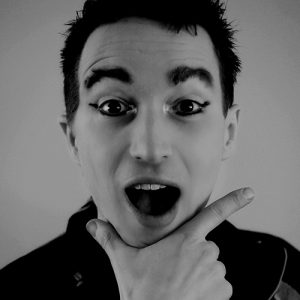
New York City has the Actors Studio, there is the National Theatre School in Montreal, others will go to the National Institute of Dramatic Arts in Australia, three well-known institutions to learn about a director’s various hats when giving life to a script, guiding actors and creating a new world with a team of designers. The tools, the teachers and the techniques are there for theatre directors, but what about circus directors?
Since the 80’s, contemporary circus or “nouveau cirque” has taken the world by storm by turning that three-ring spectacle of stunts and sparkles into full theatrical productions and earning the title of “true art form” in some countries where circus is as eligible for grants and funding as theatre, dance or music. With this growing interest for circus around the world, under big tops, on cruise ships, in arena production or in musicals, it is fair to assume that the industry is in need of directors for these acrobatic actors.
Since you can’t major in “giving an emotional interpretation to your flips” or “upside down dramaturgy” at Clown College, I’ve asked Shana Carroll, co-founder of the “7 Fingers,” a prominent contemporary circus company in our cultural landscape, who has also directed for Cirque du Soleil, Montreal’s National Circus School and the Academy Awards, how does one become a circus director and how different or similar directing a two-act play versus a 90-minute circus show can be?
Growing up in Berkeley, San Francisco, with a grandmother who would often take her to plays and musicals and a columnist father who also was chairman for the Pickle Family Circus, Shana felt artistically stimulated very early on, knew she wanted to live and breathe on stage from age 4 and collected a variety of show experiences in her youth: from the local choir where she got to sing with guest artist Bobby Mcferrin as a kid to playing Sandy in a high school production of Grease, her path was traced and her passion tangible as she was studying to become an actress.
However, having noticed her directorial talents in student plays, her teachers kept telling her that she should become a director. Upon leaving high school and faced with the hard reality of the industry, the competitiveness of the audition and casting process, 18-year old Shana was determined to become a director, to work on professional underground plays and to build herself a creative reputation in the business… until she started working in the Pickle Family Circus’ office!
While learning about arts management, non-profit organization, group sales and house management, she would keep her eyes on those men and women who were flipping and flying right next to her office.
“It wasn’t about being fascinated nor thinking that it looked amazing. That feeling of ultimate freedom and of being able to fly just drew me to circus and I dropped everything to become a trapeze artist, even though I really wasn’t a physical person at the time.”
One trick at a time and one bruise after the other, she rediscovered herself both as a person and as an actress, high above the stage. “I had to be courageous, strong and confident, all the qualities which you are usually lacking of at 18 years old! I felt that I could express myself artistically better than with acting, circus felt raw and pure where theatre would make me feel stuck. On trapeze, I learned to be strong, I had to be, and there also was that adrenaline and endorphin factor. That risk-taking is very empowering and addictive!”
A few years into her trapeze career, Shana joined the production Saltimbanco by Cirque du Soleil, where, next to swinging high above the crowd ten times per week, she was also working as dance captain, was involved in act creation and helped putting on cabarets on off nights. Performing at her very best each night and enjoying every performance were already respectable goals, but, being a cerebral person and wanting to be stimulated artistically in other ways, Shana quickly started to devote her time and creative energy to the other artists, working as choreographer and artistic consultant on several acts since the creation phase of her own piece was over. “The thing with circus is that, once you start running the act, the creative moment is gone, once you start perfecting a routine by repeating it, the artist in you isn’t stimulated the same way than it is in creation. The goals are different.”
While reaching her goals on stage around the globe and feeding her creation needs with her cast mates, new desires slowly emerged and, after 7 years of twists and turns, she took her final bow with Saltimbanco to create Les 7 Doigts de la Main with 6 fellow circus artists who shared similar artistic aspirations. Even though the initial plan was to both perform and direct for the company, working as director would be her priority from then on.
When asked about the most important thing to know when directing a circus show, Shana insists that the most misunderstood thing about circus is that the director is actually also a playwright and that one does not go without the other.
The show is a blank page, some will be more scripted, others might be less structured, either way, a circus director must do the work of a writer, whether it’s early on, years before production or right until opening night. Everything has to be written, which can be long and frustrating at times, but, in order to get the best results out of the cast, each scene should at least be somewhat visualized prior to the rehearsals. There are certain elements that, as a director, you will want to get to, acrobatically speaking and those moments will be easier to get if you have weaved the story properly and established your show’s landmarks. Those are essential to the story.
Shana also underlines the importance of having an open mind, of not holding on too strongly to some ideas and that, since circus artists aren’t trained actors, not in the classical way at least, using them with their essence and uniqueness will most often give better results than sticking to a script that was written before they came into the room. If writing is essential, so is the flexibility around it when it comes to directing a circus show: “You’ll get authentic and more powerful results if you avoid trying to fit a square into a circle!”
Unlike with a classical play, there is no literal script, but a loose storyline that will most often be influenced by the performers and their own stories. Responding to what’s in the room instead of getting too attached to the original idea and not being afraid to step away from the story will be crucial at times, since some acts have this visceral power that goes beyond story telling, almost like an opera.
Given how essential writing seems to be for the director, does a circus show have to tell a story? “OH NOT AT ALL! Circus is very wide and there are many truths, infinite ways to look at, to approach, to present an act or a scene. One should not go for the absolute truth or a literal story when directing a circus show, not unless you are ‘fluent’ in Circus and understand how to use it as language. It’s possible, but definitely not necessary.”
If theatre finds its strength in poignant monologues and dialogues as well as in what’s not being said and left to one’s interpretation, circus relies on stunts, skills and on how they can express something that can be very personal and weave a story that will reach the audience beyond that somersault.
According to Shana, who has been immersed in both worlds, whilst you can easily get all caught up in the theatre world, where egos feel bigger and narcissism more present to her, circus feels more generous and authentic: “Risking your life to be beautiful, for the pure enjoyment of your neighbour might be the most honourable thing that one can do on stage. There is a form, a way to express yourself that is enabling moments of power and virtuosity.”
“Unfortunately, people often get too purist about form and wanting to put everything in a box and, with circus, a hybrid to me, they should accept that such a box might not exist for that particular show.”
After co-directing and co-starring in Loft with the 7 Fingers in 2002, Shana went on directing and co-directing several productions with the company, feeling the challenges were more present as a director who happened to have the expertise of a circus artist. With Paramour, a Broadway musical produced by Cirque du Soleil where tap and trapeze would trade places, she somewhat got back to her theatre roots, as circus acts were used to serve the play, were integrated into the story for the good of the plot and characters instead of being the main focus.
Her theatre colleagues, not familiar enough with the mechanics of circus, could not see what was being said in mid-air because they were fascinated by the circus, which they defined as “spectacle.” Directing both actors and acrobats on the same show also clarified the differences between both worlds, as actors felt psychologically more fragile, being unable to rely on their tricks, only on themselves, on stage, where the willingness to try was more present with the acrobats who felt more creative, more keen on taking risks.
To conclude, Shana affirms that no matter how big or small it is, a good circus director has to care about the story, needs to be deeply attached to it and that directing, actors or acrobats, is about making decisions and always thinking about the big picture, doing details while zooming out.


Impassioned by performing arts, Martin Frenette started intensive dance training at a very young age before trading pliés and barres for ropes and somersaults at Montreal's National Circus School. He has spent a decade in Europe, performing in various productions. Circus Monti, Chamäleon Theater, Wintergarten Varieté, Cirque Bouffon, GOP Show Concepts, and the Friedrichsbau Varieté have allowed him to grow artistically and humanly. Martin has also invested time working as an artistic consultant, director, and choreographer for both circus and dance projects. He enjoys splitting his time between Europe, Canada, and the US, working on stage and creating for others. Writing has always been a big passion of his and he's thrilled to share his views on shows, the stage, and what's going on behind the scenes with other performing arts enthusiasts!
Read Full Profile© 2021 TheatreArtLife. All rights reserved.

Thank you so much for reading, but you have now reached your free article limit for this month.
Our contributors are currently writing more articles for you to enjoy.
To keep reading, all you have to do is become a subscriber and then you can read unlimited articles anytime.
Your investment will help us continue to ignite connections across the globe in live entertainment and build this community for industry professionals.